DIY: STAIR RUNNER PROJECT
By JEN WOODHOUSE

GETTING STARTED
A stair runner does more than just look pretty. It can minimize those creaky steps, prevent slips and falls, and even make the ups and downs easier for your furry friends! So, pick out the carpet runner of your dreams, grab your Arrow PT50 pneumatic staple gun, and give this DIY stair runner project a try.
YOU WILL NEED
.jpg&w=3840&q=75)
PT50
Pneumatic Staple Gun
Other Tools
Electric sander
Painter's 5-in-1 tool
Scissors
Pipe cutter
Cordless drill
Materials
120-grit sandpaper
Wood oil finish
Towels or rags
Painter's tape
Arrow 1/2" staples
Rug pad
Rug runner
Wood filler (optional)
Black marker (optional)
Brass stair rods and brackets (optional)
PROJECT VIDEO
LET'S GET TO WORK!
STEP 1
We had a little work ahead of us before we could start laying our runner. If you need to prep your wood stairs, start here. If not, you can skip to step 3!
Foot traffic can wear down your stairway, but that’s nothing a little sanding can’t fix! Start by sanding each stair tread with your 120-grit sandpaper to expose the raw wood. This also opens up the wood fibers so that the wood oil finish can easily penetrate the surface. After about 30 minutes of sanding all the treads, the wood should look clean and new again!
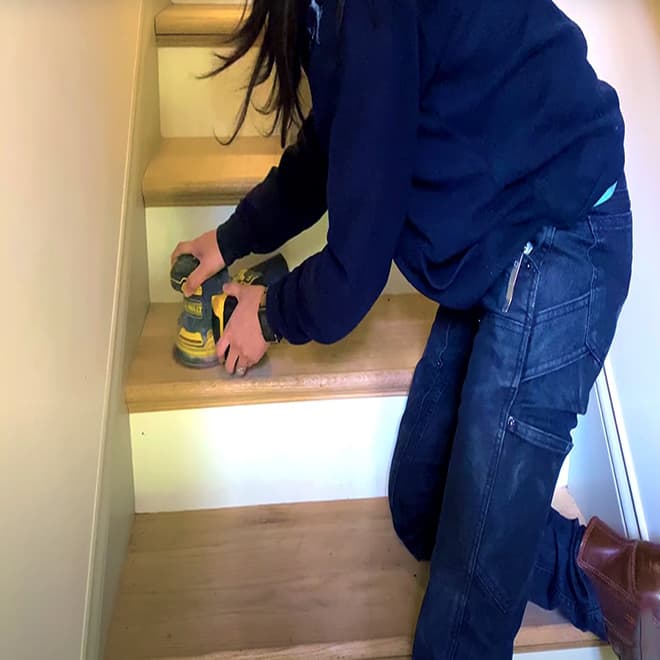
STEP 2
Now for the fun part – stencils! We chose to use floral stencils, but you can pick any pattern you’d like or skip this step altogether.
Once the second coat of your base color has dried, lay the stencil on the pegboard, starting at a corner. Use your sensitive surface painter’s tape to hold the stencil in place before applying just a bit of paint to a clean foam roller. But before you do this, make sure you off-load the excess paint into the roller tray, because the more paint you use, the more likely you’ll get bleeding under the stencil. That’s why it’s always better to do two light coats rather than one coat that’s too heavy.
Next, gently roll the foam roller over the stencil, ensuring that it doesn’t shift. Once the section is done, carefully lift the stencil. Then, use the repeat reference marks on the stencil to align it over the next section and tape it in place before using the foam roller again. Repeat until the entire surface of the pegboard is stenciled. The pattern should come out nice and crisp.

STEP 3
Now that the necessary prep work is done, let’s move on to the fun part – installing the rug! First, figure out where to position the runner so that it’s centered on the stairs. One way to do this is to scoot the runner all the way over to one side of the stair tread, then measure the other side where the tread isn’t covered by the rug. Take this measurement and split the difference. Use painter’s tape to mark those measurements so the runner will stay straight and centered on the stairs.
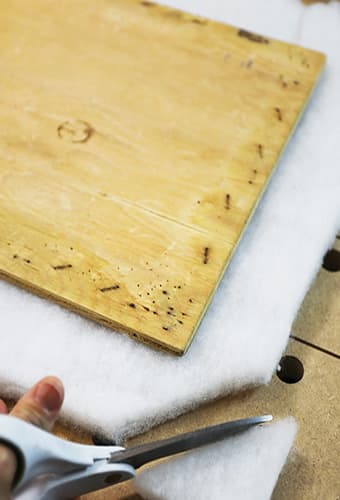
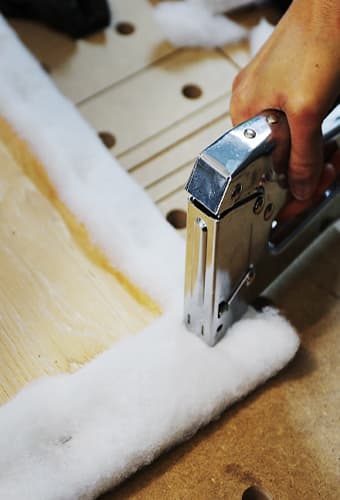
STEP 4
Next, use scissors to cut the rug pad down to size and staple it to each tread using your Arrow PT50 pneumatic staple gun and Arrow ½″ staples.
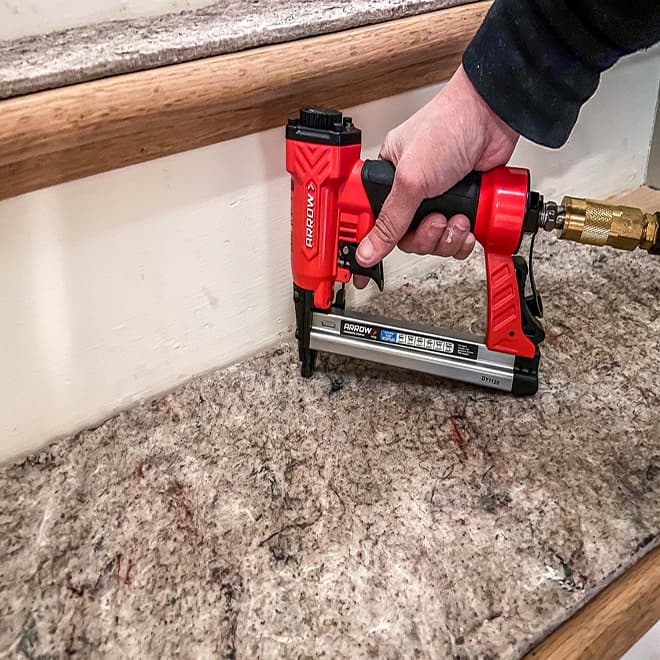
STEP 5A
And now for the runner itself! Starting from the top of the stairs and working your way down, staple the runner just under each stair nose and at the joint where the riser meets the tread, spacing the staples about 2″–3″ apart. You can use the painter’s 5-in-1 tool to tuck the rug into the crease for the tightest fit. Continue down the stairs until the rug ends. Depending on the color of your rug, you can also color the top of the staples with a black marker so they’re less noticeable on the runner.


STEP 5B
If your staircase is extra-long, you may need to use multiple runners. To join separate runners, use scissors to cut the first rug just under the stair nose and then cut off the top seam of the second rug and staple it right where the first rug ends. If you need to join a third runner, start from the bottom and work your way up to the second rug. This way, your border or seam can end at the bottom of the staircase. Just be sure to double- and triple-check your measurements because you want each rug to line up exactly with the previous one.
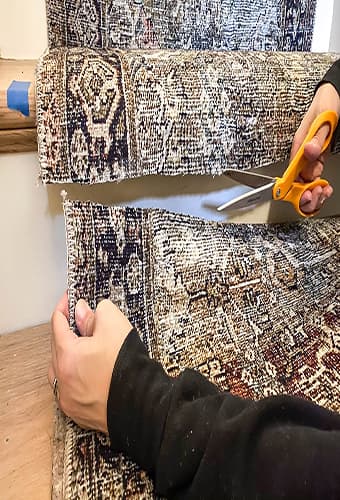
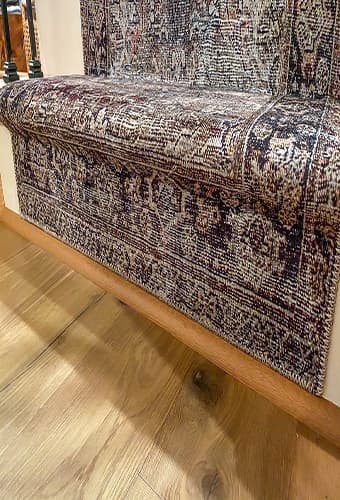
STEP 6
For a finishing touch of elegance, add some optional brass stair rods and brackets. You can use a pipe cutter to cut the brass tubing to length, then use a cordless drill to screw the brackets to the stairs.
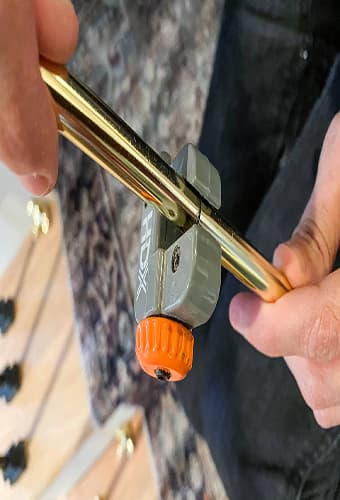
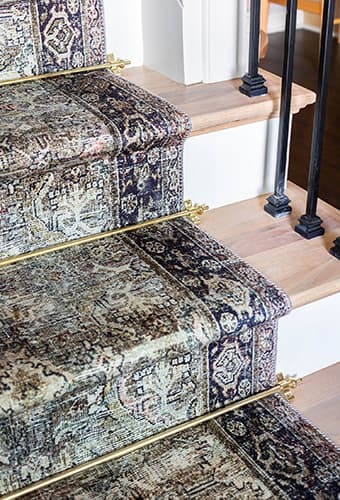
STEP 9
Once the framed pegboard is securely in place, it’s time to decorate! Additional pegboard hooks can be purchased from home improvement stores or online. This is the perfect time to put your own special touch on the project.
FINISHED PRODUCT

This is the perfect project to brighten up your home over a rainy long weekend! We’d love to see how your DIY stair runner turns out! Share your work with us on Facebook and Instagram by tagging @ArrowFastener or using #MadeWithArrow.
ABOUT THE AUTHOR

Jen Woodhouse
A self-taught carpenter with a fearless DIY spirit and a penchant for problem-solving, Jen Woodhouse offers in-depth tutorials that inspire and encourage readers to build their way to a more beautiful home. Follow Jen at @jenwoodhouse on Instagram.
WANT TO BE A FEATURED ARROW BLOGGER?
We’d love to hear from you! If you would like to be an Arrow Project
Partner and contribute future posts here, contact us at projects@arrowfastener.com
We look forward to hearing from you!